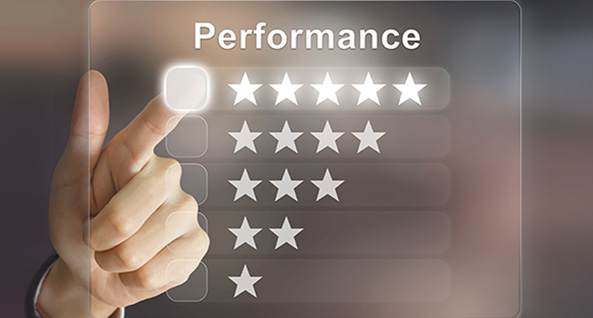Leverage the Middle and Improve Channel Partner Performance
 It’s common for any given organization to find that 80 percent of their channel partners fall into the “Growth Potential” or “B player” segment. Many of these outlets have the capability to become “High Performance” or “A player” channel partners, but require additional tools and attention to reach their potential. Because of their sheer numbers, when members of this broad group improve, it has real impact. Consider this: if your B player outlets improve an average of 8 percent, it equals an overall channel performance improvement of nearly 3 percent. (Exhibit A)
It’s common for any given organization to find that 80 percent of their channel partners fall into the “Growth Potential” or “B player” segment. Many of these outlets have the capability to become “High Performance” or “A player” channel partners, but require additional tools and attention to reach their potential. Because of their sheer numbers, when members of this broad group improve, it has real impact. Consider this: if your B player outlets improve an average of 8 percent, it equals an overall channel performance improvement of nearly 3 percent. (Exhibit A)
Yet many organizations focus all their efforts, including reward and recognition entirely on A players – send the top 10% on a trip and hope that the entire organization works hard to be in that group. The reality is the majority of the outlets know they don’t have a chance to win so they don’t even try. Certainly this A group deserves the reward. You want to recognize and retain those A players. Assuming a normal bell curve distribution of performance, A outlets need only improve 3% to generate almost 2% total revenue improvement. But companies are leaving increased revenue on the table when they don’t address the performance improvement needs of the larger group as well. And this doesn’t even consider improvements in measures like customer satisfaction and brand image. Improving the performance of all outlets is good business.
Depending solely on Herculean efforts from A players isn’t reasonable, especially when a realistic amount of effort from B players can produce the same result. What can seem like an unrealistic goal is much more attainable when you spread out the responsibility across a larger group.
Example: One brand within the automotive industry has had tremendous success using this approach to significantly improve customer satisfaction and dealer profitability. The organization conducts detailed research and analysis to help each dealership identify what’s working well and opportunities for improvement. Each dealership is then assigned a trained facilitator who works with each B player to develop specific action plans to improve his or her performance based on the research. The dealers are paid a performance bonus based on their sales numbers and customer satisfaction index. In addition, high performing individuals are recognized with incentive rewards. Measurable results include an increase in sales by participating dealers of 14%, a reduction in warranty service comeback ratio to well below national average and a reduction in sales consultant turnover from 50% to 10%. This approach has worked so well that the brand is now an industry leader in customer service and sales.
Clearly, B outlet performance improvement presents a considerable opportunity. How can an organization make the most of B potential? The first step is to understand that not all B’s are created equal. Your middle players arrived at their current status in a variety of ways; closer examination of their varied situations is key in making an impact on performance.
Within the broader B player group, there are four separate profiles: new outlets, declining A outlets, rising C outlets, and solid B outlets. Once you understand each B type, it’s essential to diagnose each with their particular obstacles and opportunities. “Actionable” feedback is essential here. Information without explanation or guidance for implementation is simply of no use. At this stage, surveys and other diagnostic research are used to help establish an ideal A player template. Once this template is defined, areas where B player performance falls short can be quickly identified.
Example: A large petroleum company has been focusing improvement efforts on all of its retail stations for years. After developing a set of brand standards to ensure dealers deliver a consistent image and quality experience to customers, this company regularly measures performance against those objectives through a combination of customer satisfaction research and mystery shopping. “Virtual customers” visit stations with a checklist of measurements and rate stations on adherence to standards – everything from the appearance of the facilities and use of signage to quality of service. Measures are used to provide on the spot awards for front line employees as well as annual awards for owners and managers. Analysis has shown the link between good performance in the program, customer loyalty and increased revenue. By working to improve the standards of all stations, this company has not only seen ongoing improvement in customer satisfaction ratings, but overall gasoline volume has increased by 13%.
When measurement of B outlet performance is complete, findings are most effectively addressed by employing a complete menu of support offerings. Business consulting helps design performance improvement plans that fit organizational culture and priorities. Core skills and competencies analysis provides a framework for potential learning interventions. While a variety of training methods may be suitable, those offered should be tailored to the specific needs of the outlet. Targeted incentives are used to reinforce desired behavior and to reward achievement that has business impact. Forums provide valuable organizational support for performance improvement, as they allow a place for exchange of ideas and discussion of issues (in addition to providing the sponsoring company a “reality” check).
Each B outlet type is best served with a different combination of performance improvement tools: consulting, analysis, learning, incentives, and forums. This customization is ideal for the varied situations found in B outlets, and allows organizations to focus efforts for the greatest, and quickest effect. Plans for B to A player conversion are about getting the most effect in the most efficient way.
Once an organization recognizes that the largest, most varied group of outlets also has the most potential for improvement, it is poised to make great strides in achievement. Suddenly, investment in performance improvement for a large group of B players becomes smart, even genius. Welcome to the new perspective, and new opportunities, this type of investment can bring.

